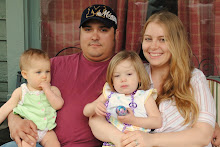I know there are several meanings of Christmas, either it be something that you make your own or from the history/religion. Do people put up lights because they know the history of them? Or do they do as a tradition of thier own? I am not sure...I do not know alot about religion, or going to chuch; so when I came across this article I learned quite a bit... The article which I found in KC Parent magazine explains some things that we do at Christmas...
http://kcparent.com/KCParent/10-12-01/Christmas_Traditions.aspx
1. Christmas Lights
Adorning the Moorish towers of the Country Club Plaza are Kansas City’s famous Plaza Lights, twinkling since 1925. Legend holds holiday lights date back to the 16th century German reformer, Martin Luther, who first placed candles on a Christmas tree long before the invention of stringed bulbs. The lights are symbolic of Christ, the “light of the world.” And our glowing tree toppers—stars and angels—symbolize the star that shone over a stable in Bethlehem and the host of angels proclaiming Jesus’ birth.
2. Christmas Tree
Decorating with evergreens harkens back to ancient Egyptians, who used the branches to honor the god of winter solstice. Similarly, the Scandinavians and Celtic Druids revered these plants for their hope of life in the dead of winter. But evergreens, remaining ever green as other plants wither and die, have become an enduring Christian symbol of everlasting life.
The Christmas tree became rooted in this metaphor when Saint Boniface, in the seventh century, used the fir tree’s triangular shape to teach about the mystery of the eternal trinity—God as Father, Son and Holy Spirit. In 12th century Central Europe, Christmas trees were hung upside down from ceilings. Later in Germany, trees were decorated with dried fruits, apples and wafers representing the Tree of Life and the body of Christ.
3. Wreaths
Dotting doorways around Kansas City, the holly wreath greets passersby with welcoming cheer. First used to honor ancient Roman gods, the wreath symbolizes eternal life for its circular shape and lasting green. It also pierces to the heart of the Christmas story. Tradition holds that the crown of thorns worn by Jesus at his crucifixion was formed of prickly holly and that its berries, once white, were tinged red by his blood.
4. Giving gifts
Gift-giving is a quintessential custom around the world, but the gift bearer is not always the jolly Santa Claus who makes a stop-in for breakfast at the local HyVee. Like Britain’s Father Christmas, France’s Père Noël, Brazil’s Papai Noel and the Netherland’s Sinterklaas, Santa Claus’ origins trace to the patron saint of children, Turkey’s Saint Nicholas. Santa’s flying reindeer—eight in all, until the addition of a certain red-nosed buck—pay tribute to the Norse god, Odin, whose chariot was pulled by a flying, eight-legged steed.
In Russia and Italy, the gift giver is a witch, Babushka and Befana, respectively. Legend says the crone was too busy sweeping her floors to accompany the magi on their journey to Bethlehem. She soon had a change of heart and took up a basket of gifts to offer the Christ child. To this day, Babushka wanders the countryside (Befana on her flying broom) in search of this holy baby, leaving toys for all good children along the way.
5. Caroling or singing Christmas songs
The Christmas narrative recounts voices of angels glorifying God, but the custom of caroling is largely credited to Saint Francis of Assisi. Francis used songs to teach common folk, who couldn’t read or understand the Latin mass, the Christmas story.
Caroling house-to-house heralds back to medieval wassails. In England, peasants visited the homes of feudal lords to bestow blessings in exchange for food and wassail, a warm drink. In Greece and Romania, children still knock on doors, caroling for treats. And in Mexico, on the night of Las Posadas (“The Inns”), chanting pilgrims venture house-to-house in candlelit processions. Several times they are refused lodging, reenacting Mary and Joseph’s arduous journey. The procession ends huddled around a nativity scene in homage to the Christ Child—God With Us—born on earth.
Did you learn something new? I hope so! Or maybe it just refreshes your memory for those of you who couldn't remember some of the background behind the symbols of Christmas that you see around you.












No comments:
Post a Comment